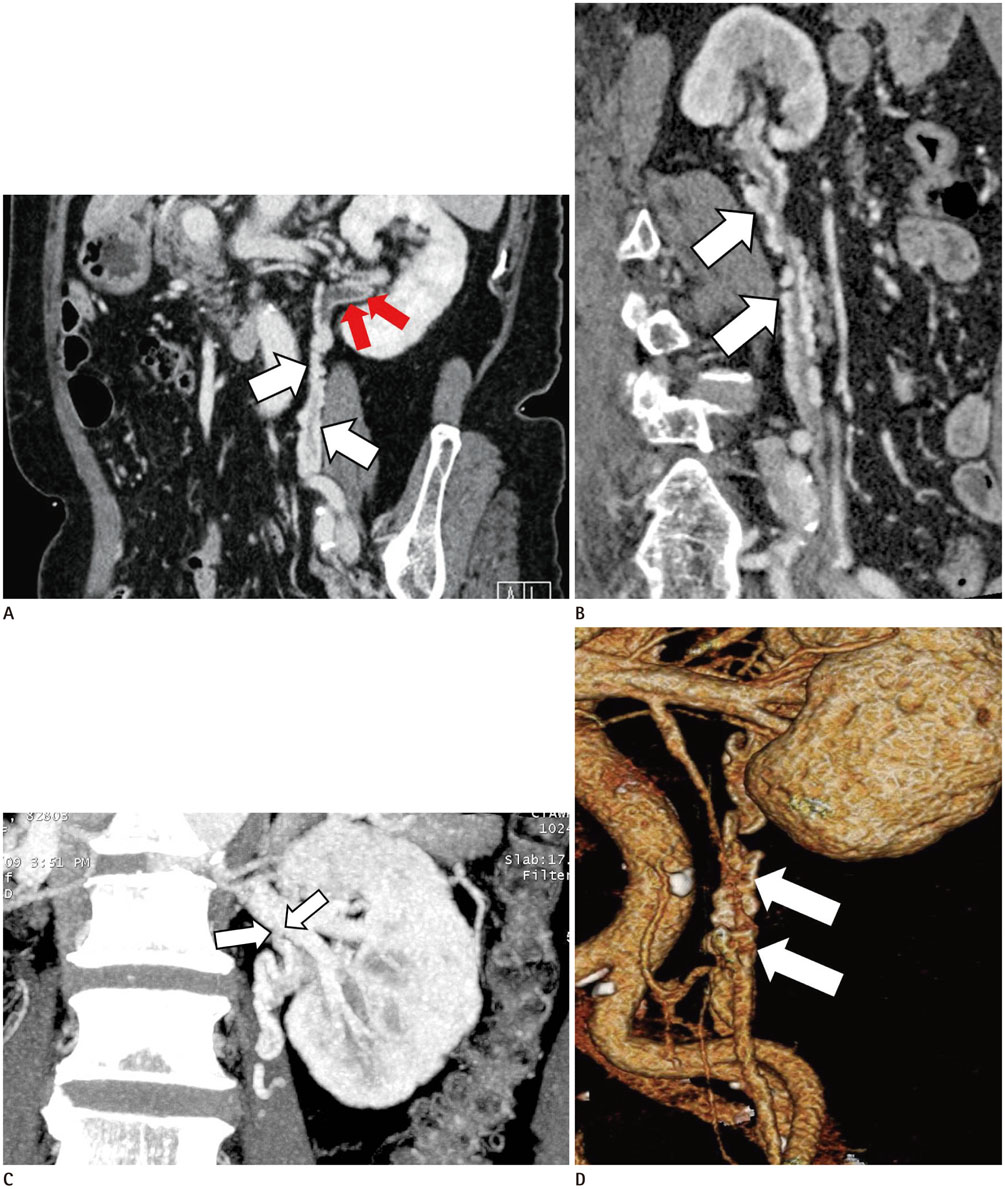J Korean Soc Radiol.
2016 Oct;75(4):327-331. 10.3348/jksr.2016.75.4.327.
Periureteral Varices with Accompanying Pyelitis Diagnosed by 3-Dimensional Reformatted Technique of the Multidetector Row CT: A Case Report
- Affiliations
-
- 1Department of Diagnostic Radiology, College of Medicine, Yeungnam University, Daegu, Korea. ji1354@naver.com
- KMID: 2353686
- DOI: http://doi.org/10.3348/jksr.2016.75.4.327
Abstract
- Periureteral varices are rare, and periureteral varices with accompanying pyelitis have been even more rarely reported. Our patient with flank pain was diagnosed with pyelitis because her CT scan showed thickening and enhancement of the ipsilateral renal pelvic wall and her clinical manifestations and laboratory results were well correlated with the diagnosis. Moreover, the author diagnosed periureteral varices because periureteral, tortuous, enhancing vascular structures were detected and 3-dimensional rendering technique of the CT scan showed that periureteral varices were connected to the ipsilateral renal vein. We experienced a case of periureteral varices with accompanying pyelitis, which was definitely confirmed by using the 3-dimensional rendering technique of the CT scan. Therefore, we report the case along with a brief review of the literatures regarding periureteral varices.
MeSH Terms
Figure
Reference
-
1. Heal MR. Ureteral varicosities--a cause of the corkscrew ureter. Br J Surg. 1970; 57:274–276.2. Weiner SN, Bernstein RG, Morehouse H, Golden RA. Hematuria secondary to left peripelvic and gonadal vein varices. Urology. 1983; 22:81–84.3. Wendel RG, Crawford ED, Hehman KN. The "nutcracker" phenomenon: an unusual cause for renal varicosities with hematuria. J Urol. 1980; 123:761–763.4. Kim HS, Park JW, Won IS, Shin KC, Kim S, Yang J, et al. A case of periureteral varices with nutcracker syndrome diagnosed by intravenous pyelography. Korean J Nephrol. 2009; 28:142–145.5. Trambert JJ, Rabin AM, Weiss KL, Tein AB. Pericaliceal varices due to the nutcracker phenomenon. AJR Am J Roentgenol. 1990; 154:305–306.6. Ali Khan S, Jayachandran S, Desai PG, Bonheim P. Renal colic, a presenting symptom of pelviureteric varices. Int Urol Nephrol. 1985; 17:11–14.7. Martelli A, Vitullo F. Microscopic hematuria due to peri-ureteral varices. Urol Int. 1970; 25:457–465.8. Johnson PT, Halpern EJ, Kuszyk BS, Heath DG, Wechsler RJ, Nazarian LN, et al. Renal artery stenosis: CT angiography--comparison of real-time volume-rendering and maximum intensity projection algorithms. Radiology. 1999; 211:337–343.9. Cuéllar i Calàbria H, Quiroga Gómez S, Sebastià Cerqueda C, Boyé de la Presa R, Miranda A, Alvarez-Castells A. Nutcracker or left renal vein compression phenomenon: multidetector computed tomography findings and clinical significance. Eur Radiol. 2005; 15:1745–1751.
- Full Text Links
- Actions
-
Cited
- CITED
-
- Close
- Share
- Similar articles
-
- A Case of Periureteral Varices with Nutcracker Syndrome Diagnosed by Intravenous Pyelography
- Sacroiliitis in Ankylosing Spondylitis: Comparison with Multidetector Row CT and Plain Radiography
- Multidetector-row CT of the Gastrointestinal Tract
- Diagnosis of Annular Pancreas Using Minimum Intensity Projection of Multidetector Row CT: Case Report
- The Quality of Reconstructed 3D Images in Multidetector-Row Helical CT: Experimental Study Involving Scan Parameters


